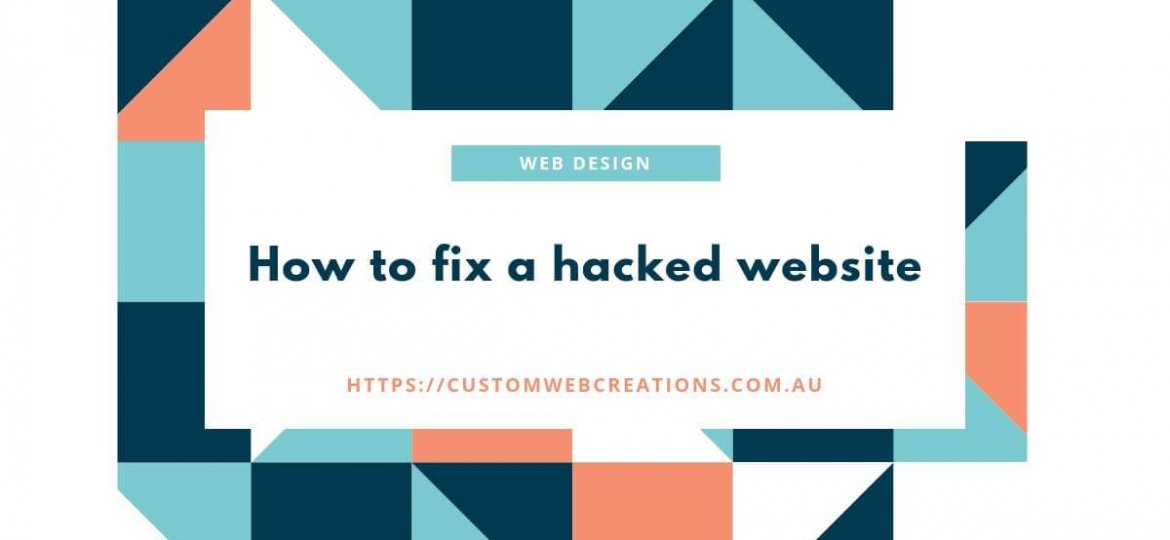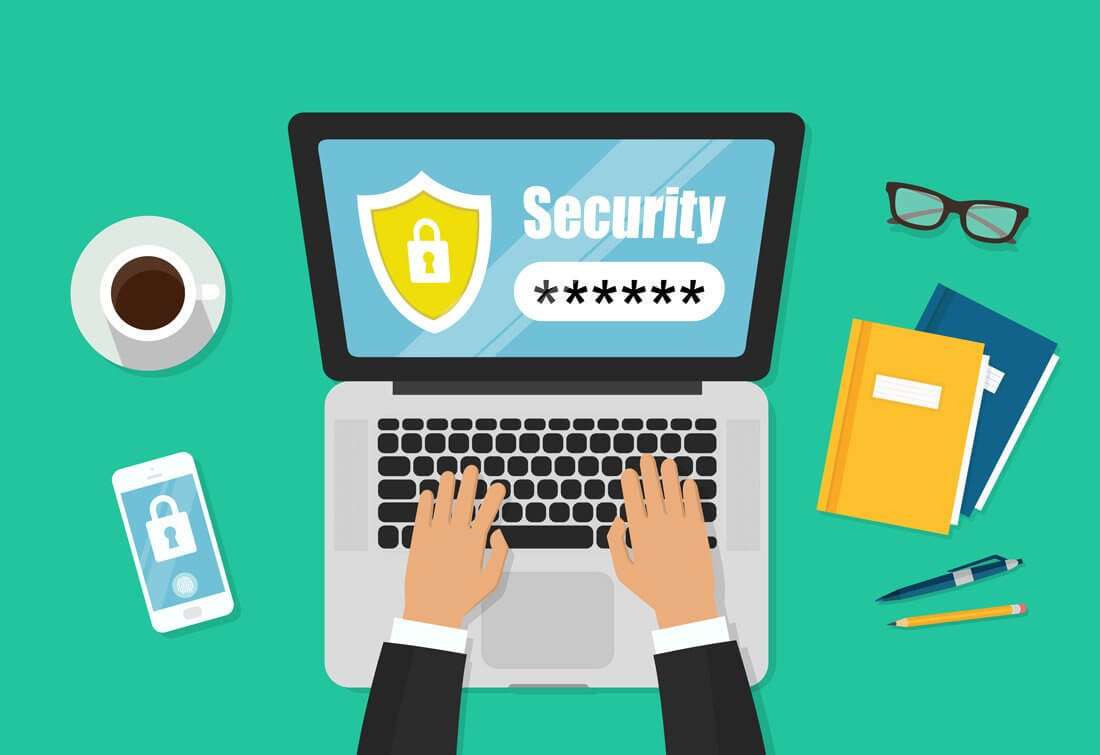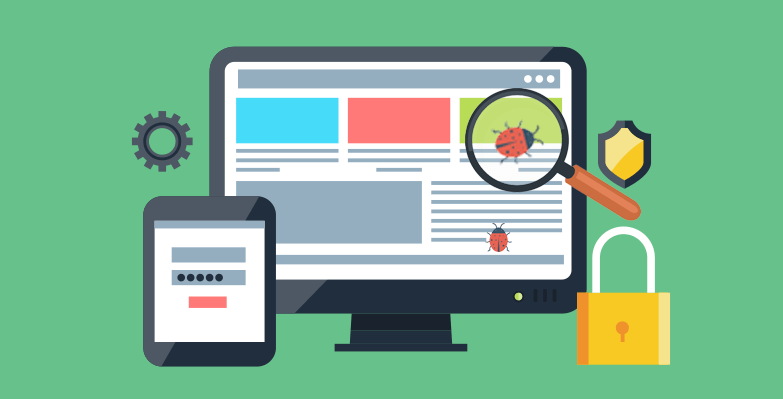
Tags: How to fix a hacked website. Website security. Malware. Viruses. Hosting. Online stores security. Get rid of malware, viruses.
These days the internet and especially website security has become an important aspect of maintaining any businesses online presence. From small 5-page business websites to full-blown major corporate websites, rock-solid security is a must.
Since the internets conception way back in 1983 when the internet was a mere social network for a group of businesses, it has since become the most influential and business-driven system on the planet. It contains more data than any library or another networking system in the world. Read about the history of the internet here.
There are more than 1.7 billion websites on the internet and counting. Each year that number increases, and this gives rise to increased hacker activity and opportunities for hackers to infiltrate web systems, hosting, websites and online stores.
Hackers infiltrate and intercept websites, databases, emails, credit card information, personal information, and any other form of data that is relayed, stored or on the internet. There are many different types of attacks on websites and eCommerce systems.
Types of website hacking methods.
1. Phishing
Phishing is most likely one of the most deceptive hacking techniques on the internet today. Users can be tricked very easily using this method on a daily basis. Phishing is when a hacker or organised group of hackers or fraudulent people replicate a website with the purpose of stealing users personal information, financial information such as credit cards and false products and/or services.
This can be used for identity theft, unsolicited marketing campaigns (spam emails), bank account and credit card theft and illegal use, as well as purchases online for products and services that do not exist.
2. Viruses and malicious code
Hackers can insert malware and viruses into the website programming code, databases and any other means of insertion. This can lead to the interception of personal and financial information, links on your website being redirected to spammy websites such as porn and gambling websites, website malfunction or parts of websites going down or offline, loss of user access to accounts and public website access, loss in business revenue, poor rankings on Google and major search engines, and many other forms of website degradation.
3. Cookie Theft
A cookie is a form of information, that usually does not contain personal or sensitive information, but can contain browsing history, username and passwords and any other information that the website you are viewing deems to allow on those cookies. Website cookies allow for a more personalised browsing experience and are stored in your browser history. It is recommended to intermittently delete your browser history.
Hackers can steal this information through hacking techniques and use it for a number of malicious uses.
4. Denial of Service (DoS\DDoS)
DDOs stands for Distributed Denial of Service. Hackers can infiltrate a server or hosting company, that hosts your website and shut it down until the hosting provider fixes it. This can take from a few minutes to weeks and in worse case scenarios, months. This means that your website will be offline for a period of time.
In this situation a DDoS does not hack your individual website but closes down the hosting your website is situated on, therefore your website shuts down. This type of hacking attack can disrupt millions of websites at a time.
5. DNS spoofing
DNS Spoofing is a form of hacking attempt where the hacker targets the cache of a website. A websites cache is a form of information that is stored on a server or hosting for a designated period of time. The cached version of a website is served in your browser for a period of time. This allows for a faster browsing experience as the cached information is downloaded whenever you visit a website.
When you visit a website you download images, elements and other downloadable parts of a website onto your browsers internet cache onto your computer. This allows for a faster browsing experience if you visit that website regularly or again as the images and elements you have already downloaded are already on your computer, so they do not need to be downloaded again.
When a hacker exploits a DNS cache, they can intercept the old cache data that you have on your hosting or server that your website may still have there. Most website cache information is deleted when a new cached version is added, but sometimes an old cache of the website still exists.
Hackers can redirect your website and links to a malicious website or spammy websites such as porn and gambling websites. They can also chain hack other DNS caches through your own.
6. SQL injection
An SQL injection is another illegitimate hacking method that aims to disrupt the workings of your website from its intended purpose. Most websites have a database. A database is a base of data or information stored on your website hosting or server that holds all the information for your website. Information such as images, links, passwords, usernames, credit card information, sensitive and financial information, emails, addresses, and much more.
The database should be the most secure section of your website, if it is not secure, then your website is at risk of numerous attacks. An SQL injection is a form of database hacking, and hackers insert script into your website that allows them access to your database.
7. Keylogger injection
Keylogger injection hacking attacks purpose is to log your keystrokes from your keyboard. They can log your website administration username and passwords, or gain access to sensitive parts of the website that should only be accessible by an intended person such as a user account.
If you have a website and your administration account or dashboard has been changed without your knowledge, parts of your website have changed, or your user accounts are being changed or deleted, then this is most likely a Keylogger Injection.
8. Non-targeted website hack
A non-targeted website attack is when a hacker or group of hackers intention is to shut down a group of websites in bulk. They can do this by looking up the Google database that has a list of websites with vulnerabilities.
9. Brute Force
Brute force hacking is when a hacker uses scripts or programs to repeatedly log in to a websites admin panel through the login page or various other methods. They can repeatedly try to login using hundreds of thousands of combinations of keywords and password variations over a short period of time.

Steps to avoid website hacking
1. Create regular backups of your website using a WordPress Plugin or a plugin or extension that is associated with the content management system you use such as WordPress, Wix or Shopify. Here are 9 of the best WordPress backup plugins. When you create backups, you create a snapshot of your website as it was when it wasn’t infected. So you can restore this backup and then change usernames and passwords as well as have a fully functioning website again.
You can also contact your hosting provider and ask if they can back up your website on a regular basis. So if you don’t have access to the website admin area, your hosting provider can restore the backed-up version from the server. As mentioned previously, make sure you change any username and passwords that you have to prevent the same thing from happening.
2. Install security plugins and extensions onto your website. WordPress has a multitude of anti-malware, security, firewall and anti-virus plugins that are available for free and paid subscriptions. They can take all the hard work out of securing your website. A web designer can install these plugins and configure them correctly. You can check out the best security plugins available today for WordPress here or The 11 most wanted WordPress Security Plugins.
3. Create a ticket system or support system for your website account holders, so they can send feedback on any irregularities that are affecting your website. This will keep you up to date and will allow you to prevent any undesirable bad experiences for your website users.
4. Use HTTPS certificates on your website hosting and server. SSL Certificates help secure your website through encryption. You can install an SSL certificate on your server manually or purchase one from your hosting provider. Any great hosting provider will have auto-SSL installed on your server, so you will not need to install one or purchase one.
SSL encrypts data that is being exchanged from your website to your hosting or database or any encrypted third-party application such as PayPal credit card processing facilities on eCommerce websites and online stores.
PayPal or any other form of credit card processing will not function correctly on your website or online store without an SSL certificate. When your WordPress website is SSL enabled, all versions of your website will redirect to the secure version.
If you are not using WordPress then other content management systems will have their own means of redirection. If your website does not redirect then you may need to hire a web designer to configure your website. Having an SSL certificate also increases your rankings on Google and other major search engines.
SSL certificates are essential for any website security, search engine rankings and they have many other benefits. You can read more on them in my other article WHAT ARE SSL CERTIFICATES AND WHERE DO I BUY THEM FROM?

How to recover or get rid of website hacking, malware, and viruses.
1. As mentioned previously you can create backups of your website, you can restore your website to proper working order through plugins or through your hosting provider. A good hosting provider will have a hosting backup system included in their hosting plans and will not charge extra for it. A great Australian hosting provider is Zuver.
2. Install a security plugin like the ones mentioned above for WordPress or I would recommend Anti-Malware Security and Brute-Force Firewall. It is free and I use it on all the websites I build for my web design business.
3. Contact a website security expert for advice or elimination and security maintenance of your website from future hacking attempts.
If you are looking for a great secure website platform, I would recommend WordPress. It is most likely the most secure website content management system on the internet. A professional web designer can install and create your website and maintain a secure environment for your business website.
Conclusion
Internet security, website, hosting and server malware, viruses, hacking attempts, and injections can be avoided with the proper use and configuration of your website. Website security can be maintained through the various anti website hacking methods and plugins I have talked about in this security article.
Getting a professional website security expert is also a great option, as there are many reasons to do so, these include: ‘don’t have the time’, ‘aren’t tech-savvy’, or just ‘peace of mind’ that a security expert is looking after your website. After all, do you go to a doctor if your ill?
Further reading:
- 9 security tips to protect your website from hackers
- Web Application Security
- The Anatomy of Website Malware: An Introduction
Timothy Allsworth is an experienced specialist web designer, content marketer, and search engine optimization ( SEO, SEM ) expert here at Custom Web Creations Web Design Brisbane. He has over 7 years of real-world experience in the field and loves helping people and their businesses to succeed in an online world through his tried and proven techniques. He has numerous university-level qualifications in Australia. Advanced web programming, database engineering, SEO and SEM specialisations, Google marketing, business marketing are some of his qualifications. He envisions a web design business that prefers quality over quantity and gives the client the best end digital product their money can buy at affordable prices.




